Submitted by WA Contents
Foster + Partners designs airport made of structural trees creating a spacious roof in Cambodia
Cambodia Architecture News - Jan 12, 2024 - 10:11 1676 views
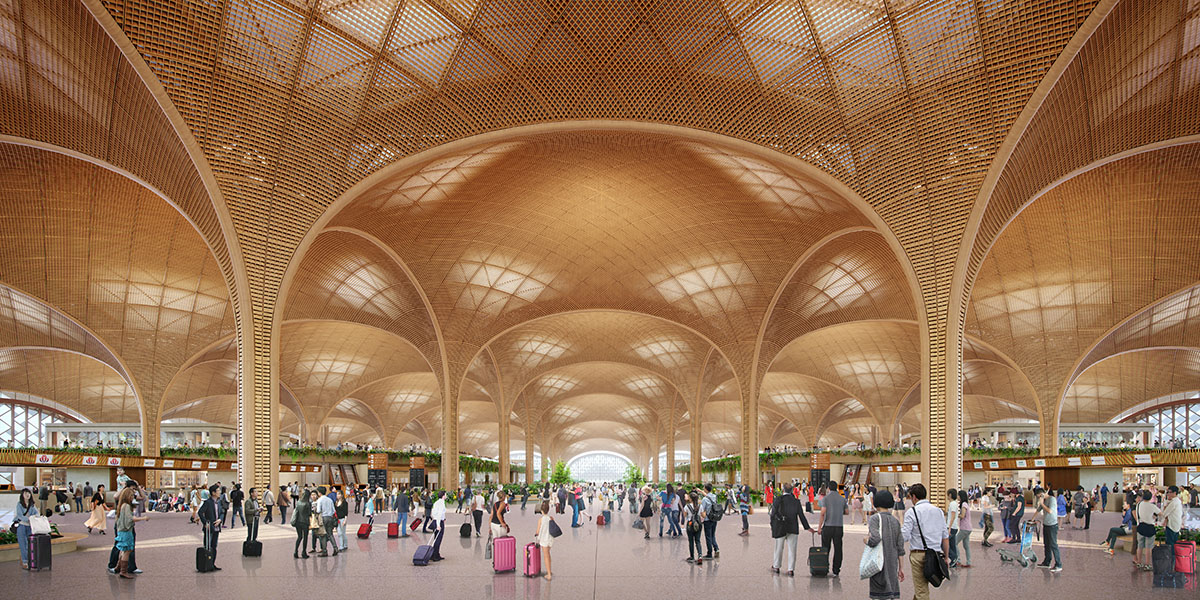
Foster + Partners has unveiled design for a new airport in Phnom Penh, Cambodia, which is currently under construction on site, a 20-kilometre away from the south of the city centre.
Called Techo International Airport, the new airport is made of structural trees creating a spacious roof and airy interor space for passengers.
Aiming to be the new vision for Cambodia’s capital, Foster + Partners is inspired by Campodia's vernacular architecture, the design also aims to be responsive to its tropical climate.

The design, embodying a strong sense of place, emerges as a result of a competition-winning masterplan by the practice.
The masterplan includes plans for a new airport city with a state-of-the-art terminal building at its heart, providing the highest levels of passenger experience and setting new standards for sustainability.
"An airport is amongst the most important of public buildings, reflecting its symbolic status as the gateway to a city and its crucial role in the globalised economy," said Stefan Behling, Head of Studio, Foster + Partners.
"The new Techo International Airport will be an important part of Phnom Penh’s continued development as the nation’s primary inter-regional, inter-modal transport hub," Behling added.
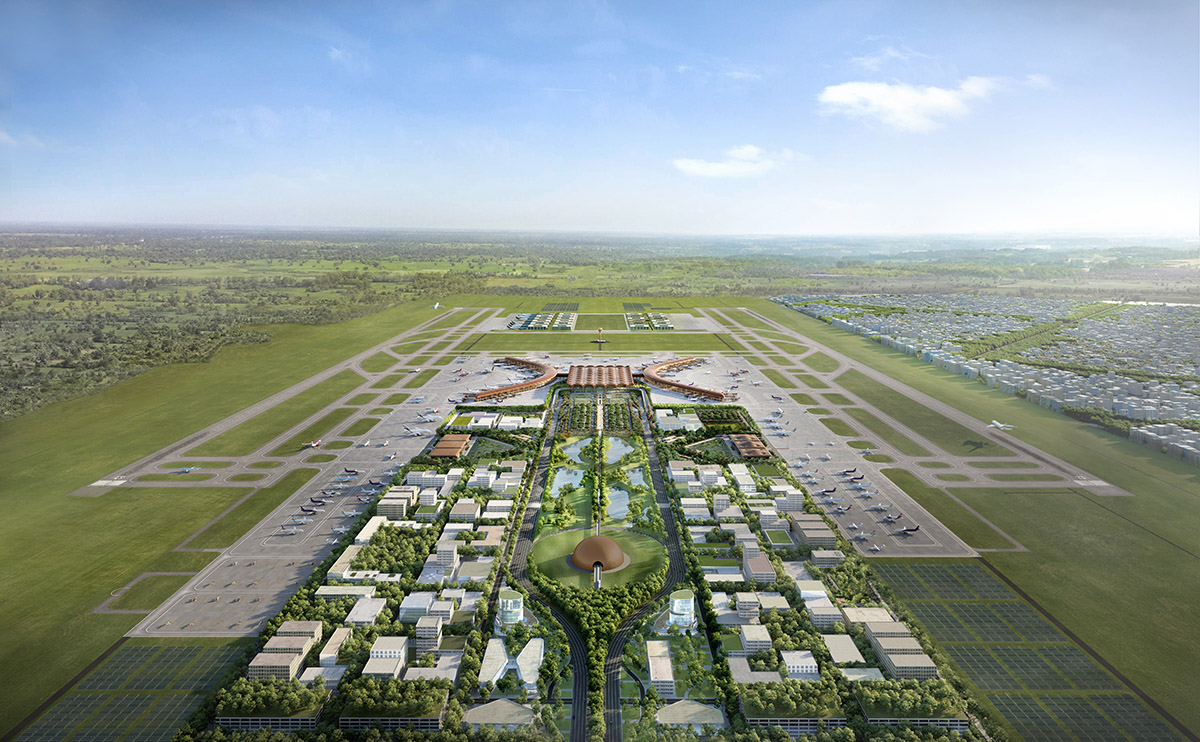
The terminal building is shaped around a central headhouse with two aerofoil shaped wings for departures and arrivals - either wings optimise walking distances.
The headhouse will contain all the passenger processing, such as security and immigration, and retail elements. All functions are collected under a single, generous overarching roof canopy that stretches from the drop-off to the airside, providing shelter from the elements.
The spacious roof is supported by a series of structural trees - with each tree spanning 36 metres. The roof canopy is made of a lightweight steel grid shell. Besides its shell feature, the roof will also have an innovative screen to filter daylight and illuminates the vast terminal space.
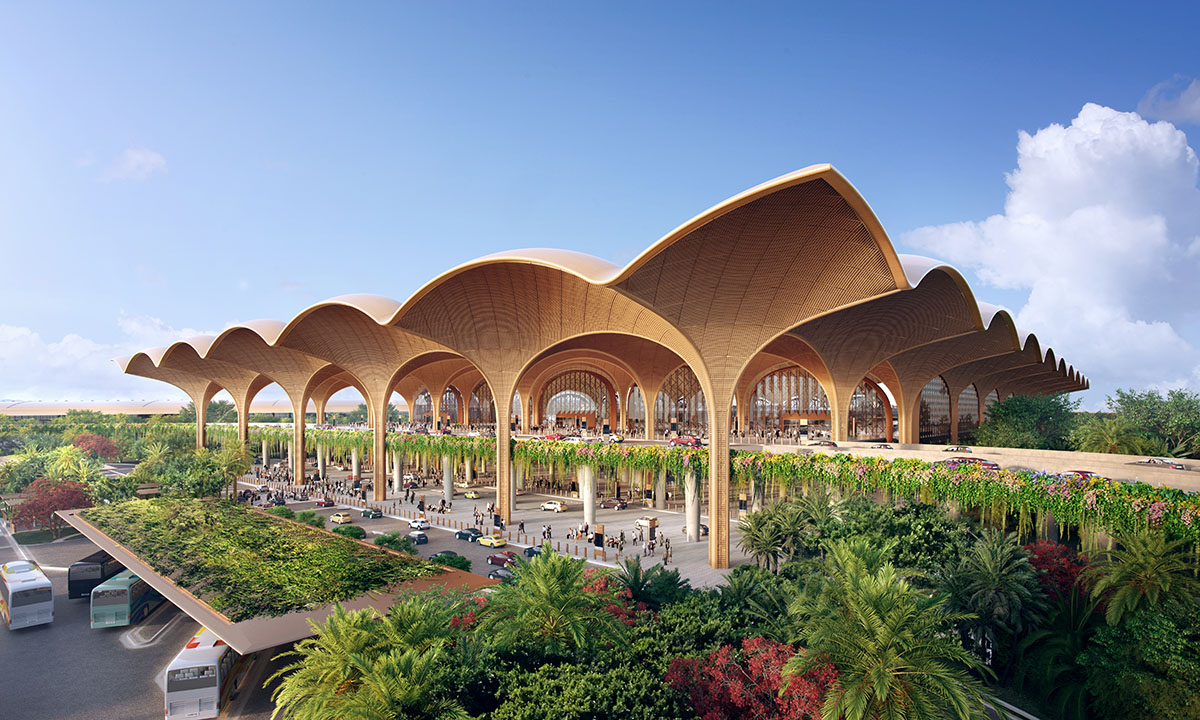
The project is aimed to be highly legible at a human scale, and it consists of minimal level changes throughout the terminal and views out to the apron to improve clarity and make movement intuitive.
In the interior, the firm will use warm and welcoming materials, referencing to the Cambodian vernacular in a contemporary manner.
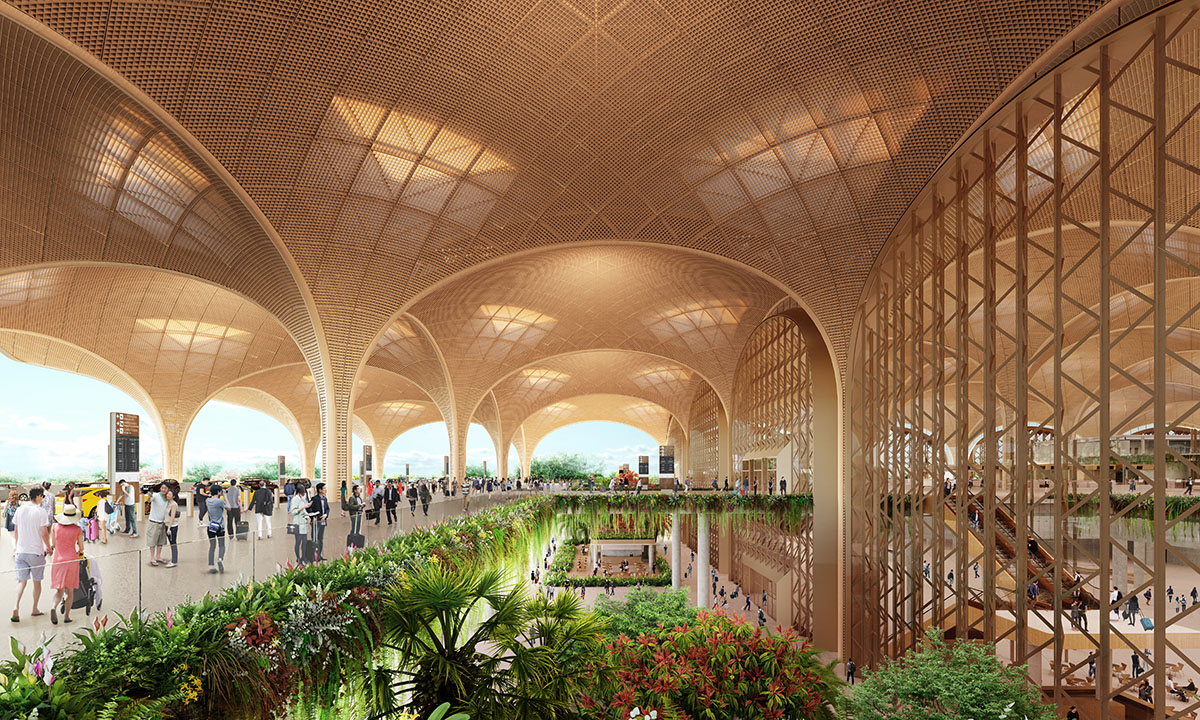
"A modern embodiment of Cambodian culture"
"Inspired by Cambodia’s history and built heritage, the terminal’s design stands as a modern embodiment of Cambodian culture. The Terminal roof is an expression of lightness and inherent modularity, serving as a symbolic gateway for every traveller’s journey," said Nikolai Malsch, Senior Partner, Foster + Partners.
According to Foster + Partners, the project targets "to be one of the greenest airports in the world", and is centered around a sustainable design approach. The design will integrate the latest technology with local craftsmanship, whilst minimising running costs.
The interior is flooded with natural light, while it is also filled with full of lush greenery. Passengers will meet with mature trees rising through the soaring central void and edge planting softening the interiors.
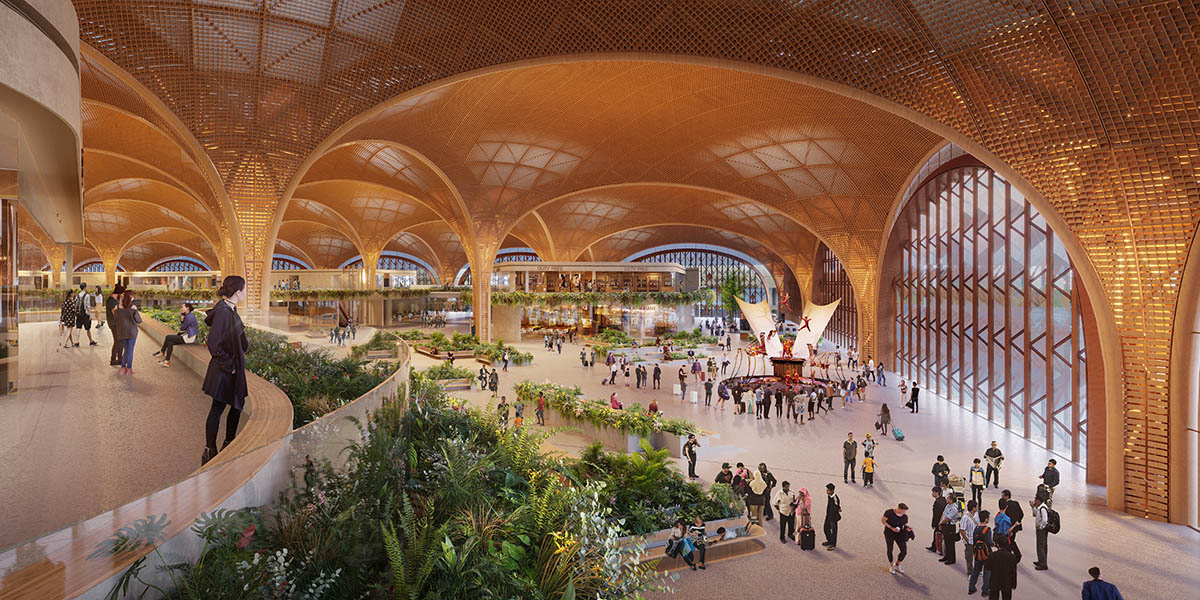
The terminal's energy supply will also be met almost entirely by energy produced by the on-site photovoltaic farm.
The project will be built by using a modular construction and phased project timeline to enhance constructability. "The terminal is strategically located to anticipate future expansion scenarios," said the firm.
The first phase of the airport terminal includes the central head house and the aerofoil wings to the north, accommodating up to 13 million passengers a year.
The firm stated that "subsequent phases will include the second aerofoil wing, accommodating 30 million passengers."
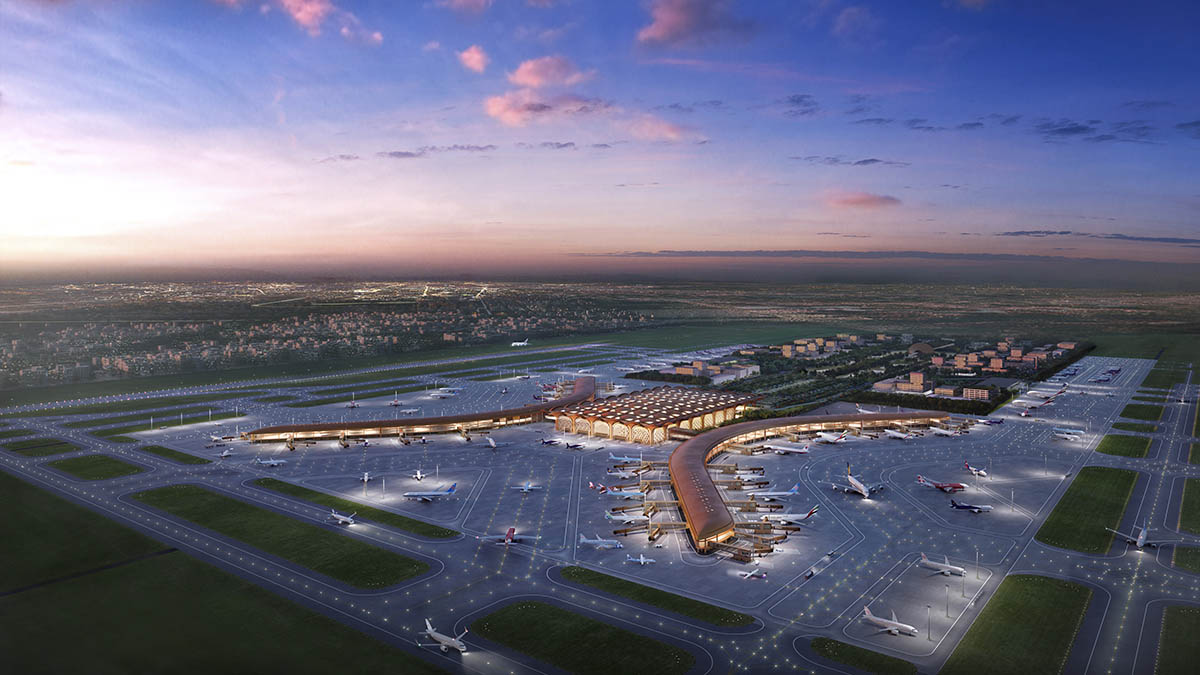
Foster + Partners revealed design for a new development referencing to Florida’s vernacular architecture in Florida, United States. The firm unveiled design for the Saudi Arabia pavilion for Expo 2025 Osaka, which will evoke the exploration of Saudi Arabian towns and cities.
The firm also won an international competition to design a new centre in Hangzhou, the capital of China’s Zhejiang province in China.
All images courtesy of Foster + Partners.
> via Foster + Partners